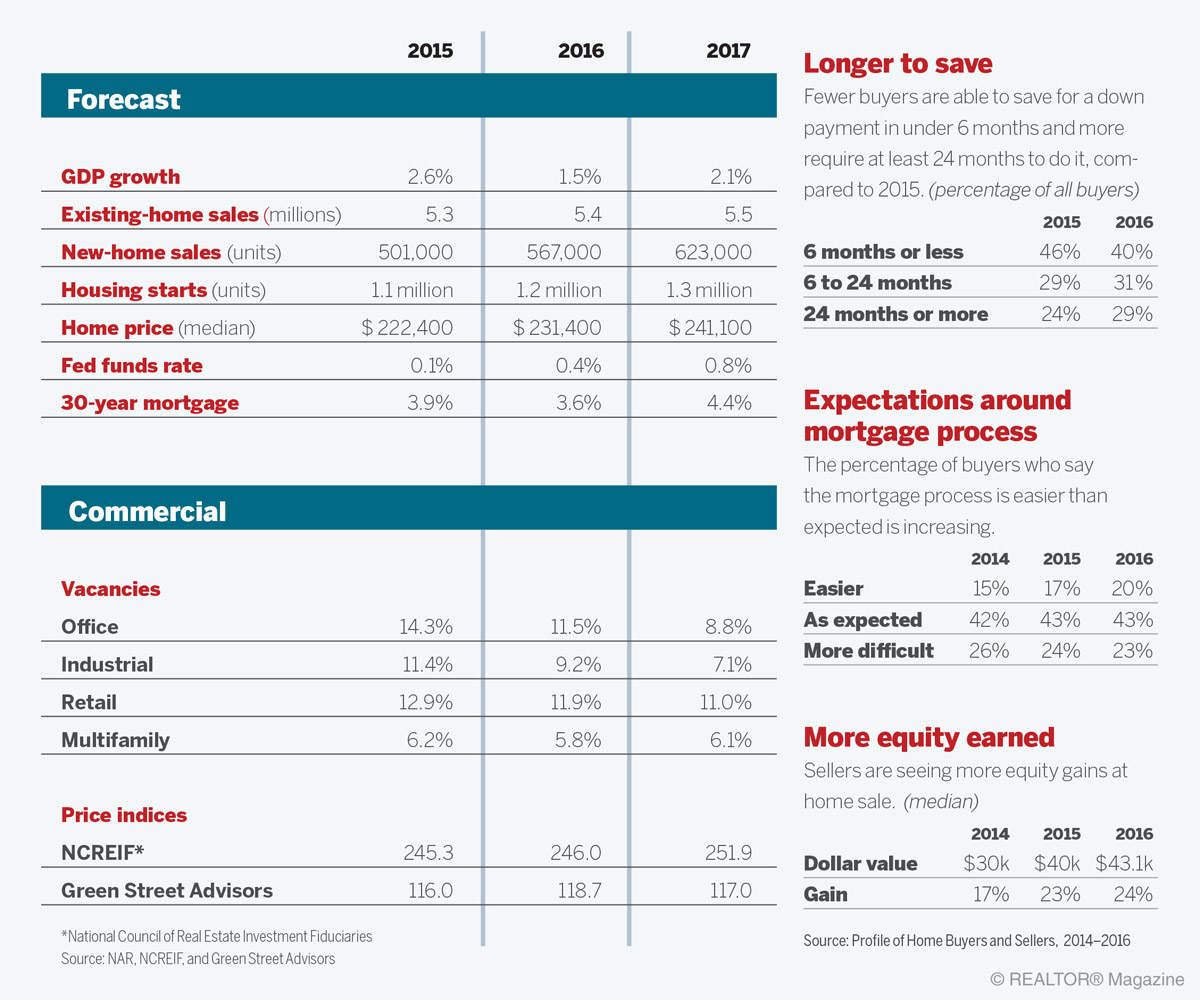The U.S. economy and its all-important real estate sector face many uncertainties at the start of 2017. While much attention will focus on the impact of rising interest rates, as long as job creation continues at a solid pace, there’s plenty of room for residential and commercial transactions to flourish. “The United States is a growing country, and its economy remains resilient in the face of many challenges,” says NAR Chief Economist Lawrence Yun. “That provides a strong foundation for REALTORS® well into the new year.”
Yun is forecasting the economy to grow by 2.1 percent next year and existing-home sales to rise modestly, to 5.5 million units, up from 5.4 million this year. He expects a nice-sized jump in new-home sales, from 567,000 units to 623,000. On the commercial side, all sectors are expected to see lower vacancy rates as occupancy demand rises with job growth.
In the multifamily sector, vacancies will stay low even though it’s the one area in which developers are still adding inventory. That’s because new units will be absorbed quickly as larger numbers of people in their twenties leave home and become renters. “We are in the midst of a demographic boom when it comes to young adults,” says Yun. “They are predominantly renters, and that will fuel growth in multifamily for years to come.” Industrial warehouses are also poised for continued strong performance, driven by the ongoing shift from in-store to online consumption.
There are two especially significant unknowns, though, for the year, says Yun. The first is the uncertainty that occurs whenever a new administration comes into office. President-elect Donald Trump ran on a promise to cut federal regulations, and to the extent the new administration carries out that goal, real estate could be greatly affected.
A rollback of rules under Dodd-Frank, the major financial services reform law enacted after the mortgage crisis, might well lead to an increase in lending on both the residential and commercial sides, Yun says, noting that community banks are the biggest source of loans for home construction and small commercial transactions. Easing of environmental rules could help, too, by reducing development costs.
Should both Dodd-Frank and environmental regulations ease, new-home construction could finally expand enough to address inventory shortages that have plagued the industry since the recovery began. Yun says builders need to add about 1.6 million homes per year to start closing the gap between supply and demand, up from the 1.2 million units added last year.
How Congress approaches tax reform matters, too. Any reduction in the mortgage interest deduction on the residential side or 1031 like-kind exchanges on the commercial side could have far-reaching effects for real estate. And the secondary mortgage-market companies Fannie Mae and Freddie Mac could face restructuring as well, which could affect the availability of mortgage loans.
The second big area of uncertainty pertains to mortgage rates. Yun says higher interest rates are likely to be the new normal, but the speed at which they’ll go up isn’t clear. Yun is forecasting the average 30-year fixed-rate mortgage to rise from about 3.9 percent at the end of 2016 to about 4.4 percent next year. “Any time rates rise, real estate purchases are affected,” he says. Sales could face a big hit if the average rate climbs to 5.5 percent, he says.
But that’s an unlikely scenario. “There remains a lot of pent-up demand for homes and for new inventory,” Yun says. “As long as job growth remains solid, we should see modest improvement in sales. And if the new administration, in fact, acts on deregulation, we could see real progress on closing the inventory shortage.”



